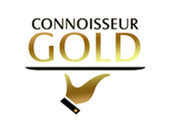Edible Gold Leaf Across the World - Brazil
- by sam@wrightsoflymm.co.uk User
The Glittering History and Uses of Edible Gold Leaf in Brazil
When it comes to luxury in cuisine, few things match the allure of edible gold. Across the globe, gold leaf, gold flakes, gold dust, and their shimmering counterparts—silver flakes and silver dust—are symbols of elegance and extravagance. In Brazil, a country known for its rich culture and culinary diversity, the use of edible gold has a fascinating history and a growing presence in modern gastronomy. From colonial traditions to contemporary haute cuisine, let’s explore how 24 carat and 23 carat edible metals have been used to add sparkle to Brazilian plates.
A Glimpse into History: Colonial Influence and Sacred Gold
The roots of gold in Brazil stretch back to the 17th century, during the height of the Gold Rush in the state of Minas Gerais. While most gold was destined for coins, jewellery, and the crown, a small portion found its way into religious artifacts and church interiors.
Portuguese colonial influence played a major role. In some aristocratic circles, 23 carat and 24 carat gold leaf was occasionally used in desserts during banquets—often as a symbol of status and divine opulence. These were rare and ceremonial uses, closely linked to Catholic rituals and elite gatherings.
Modern Uses: From Gourmet to Glamorous
In the 21st century, edible gold has made a dazzling comeback in Brazil, especially in big cities like São Paulo, Rio de Janeiro, and Brasília. Chefs and mixologists are incorporating gold leaf and gold flakes into a variety of upscale dishes and beverages.
1. Desserts and Confections
Brazilian pâtisseries are increasingly using gold dust and silver dust to decorate brigadeiros, truffles, and cakes, especially for weddings and high-end events. A 24 carat gold leaf on a chocolate truffle transforms it into an extravagant treat.
2. Cocktails and Spirits
Upscale bars now offer cocktails featuring gold flakes floating inside crystal-clear spirits. A caipirinha with a gold dust rim is not just a drink—it’s an experience. These visuals have become social media sensations and are often tagged with #ourocomestível and #luxogastronômico.
3. Fine Dining
Some luxury restaurants feature foie gras, sushi, or fillets adorned with 23 carat edible gold leaf. The addition is mostly aesthetic but adds a touch of theatricality to gourmet presentations.
Terms You Might Hear in Brazil
If you’re exploring edible gold in Brazil, you might come across a few native terms:
-
Ouro comestível – Edible gold
-
Folha de ouro 23 quilates / 24 quilates – 23 carat / 24 carat gold leaf
-
Flocos de ouro / prata – Gold flakes / silver flakes
-
Pó de ouro / prata – Gold dust / silver dust
-
Ouro para decoração alimentar – Gold for food decoration
These terms are often seen in gourmet supply stores and high-end bakeries, especially around festive seasons or weddings.
Regulation and Safety
Brazil’s health regulatory agency, ANVISA, does allow the use of edible gold and silver, provided it’s certified food-safe. It must be labelled for culinary use and contain no toxic additives. The most commonly approved varieties are 23 carat and 24 carat gold leaf, as purer gold ensures safety for human consumption.
While edible silver is also allowed, some chefs prefer to stick with gold for its luxurious appeal and historical connection to status and wealth.
A Cultural Shift Toward Edible Luxury
The growing interest in edible gold in Brazil mirrors a broader cultural shift. As the Brazilian middle and upper classes seek unique dining experiences, luxury ingredients like gold leaf are increasingly accessible, albeit still pricey. Artisanal bakeries and gourmet catering services now regularly include gold flakes or silver dust as part of their offerings, especially in urban centres.
Interestingly, some chefs are even fusing gold decoration with traditional Brazilian sweets like quindim, cocada, and Romeu e Julieta, creating a modern-meets-traditional visual feast.
Conclusion: More Than Just a Pretty Face
Edible gold in Brazil is not just about wealth or vanity—it’s about celebration, artistry, and cultural expression. Whether it’s 24 carat gold leaf atop a chocolate mousse or a cocktail shimmering with silver flakes, these luxurious elements are now part of Brazil’s evolving culinary landscape. As chefs and artisans continue to blend tradition with innovation, the use of gold dust and other edible metals promises to grow—adding sparkle not just to food, but to the very act of dining itself.





